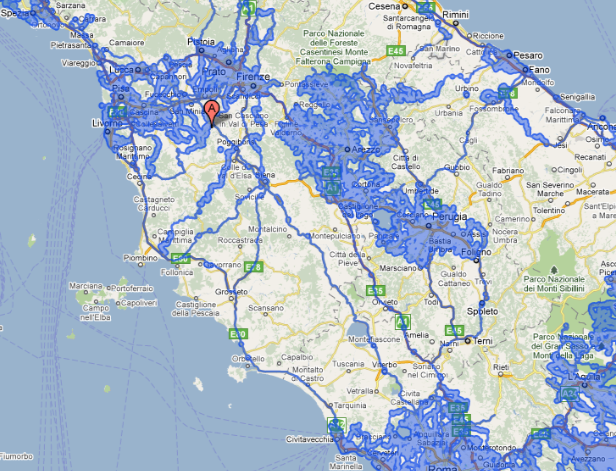EU Privacy Push May Drive Google To Stop Updating Street View In Europe
For a non-European traveling to Europe Google Street View is a great resource. This weekend, for example, the NY Times ran a piece on the Italian region of Tuscany. I then went to Google Maps to investigate how much of the region was available via Street View — a fair amount. That enabled me to […]
For a non-European traveling to Europe Google Street View is a great resource. This weekend, for example, the NY Times ran a piece on the Italian region of Tuscany. I then went to Google Maps to investigate how much of the region was available via Street View — a fair amount. That enabled me to then “drive” some of the roads and see more images of towns and the scenery in general.

While Tuscany doesn’t need any promotion, the availability of Street View images is very useful to travelers and would-be tourists from abroad. But Street View is also useful to locals as well.
Street View has been controversial and unpopular with residents in some countries but mostly with the EU and European governments, which want Google to reduce the amount of time it retains Street View images (and other data). According to Bloomberg:
The EU’s privacy watchdog said in a Feb. 11 letter to Google obtained by Bloomberg News that “it is disproportionate to retain unblurred copies of the images for one year,” and urged the company to cut the period to six months. Street View, which offers photos of roads and intersections, was introduced in 2007 in the U.S. and is being rolled out across Europe.
However Google says it needs to retain an “unblurred” version of the photography for a year. CNET quotes Google privacy counsel Peter Fleischer, explaining Google’s position:
We have done and will continue to engage with the Article 29 Working Party to demonstrate how we protect privacy in Street View and to explain our need to retain the unblurred imagery for a period of one year.
The need to retain the unblurred images is legitimate and justified–to ensure the quality and accuracy of our maps, to improve our ability to rectify mistakes in blurring, as well as to use the data we have collected to build better maps products for our users. We have publicly committed to a retention period of 12 months from the date on which images are published on Street View, and this is the period which we will continue to meet globally.
If the EU continues to press Google on the issue the company may decide against any future updates of Street View images. Again, according to Bloomberg:
“I think we would consider whether we want to drive through Europe again, because it would make the expense so draining,” Michael Jones, Google’s chief technology advocate and founder of Google Earth, said in an interview at the Cebit Technology Fair in Hanover.
It’s critical to protect privacy, clearly, and Google does blur images so that people cannot be identified in Street View. But it would be unfortunate if some compromise couldn’t be worked out. Street View and potentially competing efforts (i.e., Microsoft’s Street Side, EveryScape) are very useful for travel, tourism, navigation and education.
Contributing authors are invited to create content for Search Engine Land and are chosen for their expertise and contribution to the search community. Our contributors work under the oversight of the editorial staff and contributions are checked for quality and relevance to our readers. The opinions they express are their own.
Related stories
